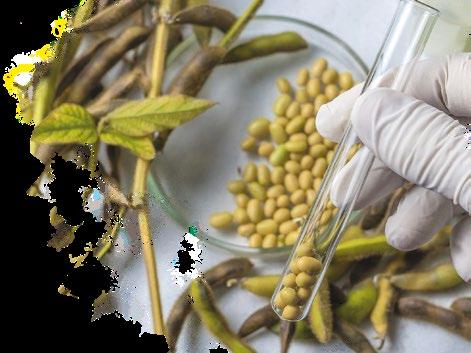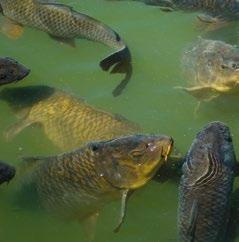
3 minute read
A NEW PERSPECTIVE ON THE CHALLENGES THAT LAY AHEAD!
The year 2022 has gone by with real challenges for the global agri-food system in the face of extreme weather events, supply-chain disruptions, international conflicts, food waste and rising environmental impacts. Resulting in uncertainty regarding our capacity to effectively mitigate global hunger and manage food security.
The challenge at hand is of titanic proportions and so are the matters at stake. Making them clear priorities for policymakers worldwide. It is no surprise that topics like food security, climateresilient agriculture, and agri-financing were rigorously discussed at the G20 Summit in Indonesia and at many other important events held throughout the year.
Identifying the problem is key. However, finding different strategies to tackle these challenges is just as important, or even more so.
Under this scenario, agri-food industry trends seem likely to strengthen themselves during 2023, in an attempt to find solutions to these conflicting times.
In a recent report, the United Nations highlighted the need to support developing nations in order for them to withstand the impacts of global warming and be able to assure a stable food supply. Climate adaptation strategies and projects have been underfunded in the past; however, this appears to have changed during 2022 and will most likely continue to do so in 2023. Hence, agri- financing and Investments linked to sustainability projects will continue gaining momentum.
Digitization in agriculture represents a tool through which economic recession in certain regions can be addressed with an aim of optimizing productive processes and the use of resources. Contributing to reducing environmental impacts associated with farming and allowing producers to achieve cost-effective productions. Therefore, both public and private entities will increase investments in agriculture technology, in an attempt to enhance further development in: remote sensing data, GIS technology and AI models amongst other tools. Boosting food production and improving profitability.
Reducing food waste must become a priority as the world struggles with food insecurity and economic instability. One-third of the food produced globally is either lost or wasted at different stages within productive chains. The implementation of circular economy models, like the use of waste streams for insect feeding and breeding, for their posterior inclusion in animal feed, seems promising. However, in order for this to occur regulations regarding the use of residue streams, and alternative feed sources must be modified and made more flexible under appropriate sanitary levels.
Soil conservation and biodiversity are major topics of discussion. However, there is still a lot to be done to mitigate soil degradation under current productive conditions. Organic farming represents a promising practice that can contribute to soil health, however it is also true that the products derived from such activities are more expensive. As a result, governments need to find ways through which they can support these green practices. The public will also have to rise up to the occasion and be willing to pay more for these products, while policymakers, NGOs, and companies within the agri-food sector, must come together with new initiatives and investments to safeguard food production and soil health.
This will be a challenging year for the agri-food industry. However, we believe that this sector will come out on top as it has done before. Putting all the knowledge, abilities and resilience of its protagonists to good use. nutriNews International will be there side by side offering its support, and delivering cutting edge information to contribute to the sector’s constant improvement.
We hope you enjoy the third issue of our printed magazine, and we look forward to keeping you informed!
EDITOR
COMMUNICATION GROUP AGRINEWS LLC
ADVERTISING
Luis Carrasco +34 605 09 05 13 lc@agrinews.es
Anna Fernández Oller +34 609 14 50 18 af@agrinews.es
CUSTOMER SUPPORT
Mercé Soler
EDITORIAL STAFF
Álvaro José Guzman
TECHNICAL DIRECTION
Dr. Edgar Oviedo (poultry)
David Solà-Oriol (swine)
Free distribution magazine
AIMED AT VETERINARIANS AND TECHNICIANS Depósito Legal Nutrinews B11597-2013 info@grupoagrinews.com nutrinews.com grupoagrinews.com Subscription price 125$
Images: Noun Project / Freepik/Dreamstime
Cristina M. L. Sá-Fortes1 and Mel Suzane Santos Marques 2
1Professor of the Animal Science course at UFMG
2Undergraduate student ofAnimal Science at UFMG
1
2 Department of Animal Science - Federal University

Importance of thermal processing of soybean meal for poultry nutrition
Vivian
Simone G. de Oliveira
1 PhD student in Animal Science - Federal University of Paraná

2 PhD student in Veterinary SciencesFederal University of Paraná
3 Associate Professor, Department of Animal Science - Federal University of Paraná
4 Adjunct Professor, Department of Animal Science - Federal University of Paraná
70 Ruminal metabolism of volatile fatty acids PART 1
1








